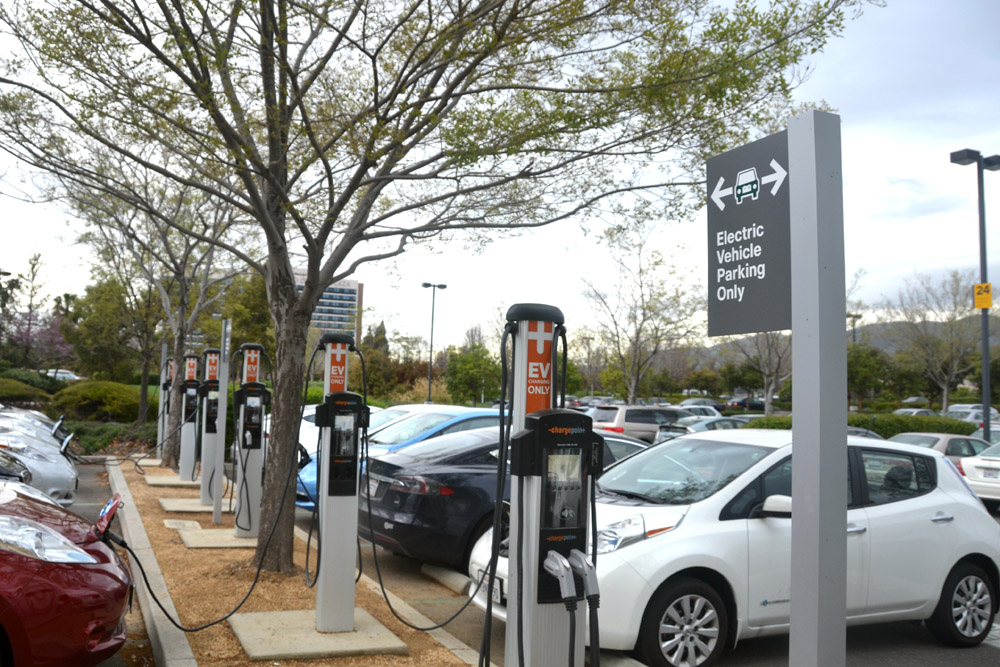
The usually sleepy month of August saw a flurry of activity around the build-out of plug-in electric vehicle (EV) charging infrastructure. Duke Energy entered into a settlement agreement that, if approved by the Florida Public Service Commission, would result in the creation of an $8 million EV charging program. A settlement was also reached in an AEP rate case that, if approved by the Public Utility Commission of Ohio, will authorize a $10 million investment in charging infrastructure. Then there was Oregon, where separate settlement agreements were filed by PacifiCorp and Portland General that would include over $2 million (in PacifiCorp’s case) and just under $2 million (in Portland General’s case) to fund charging infrastructure. With models proliferating and costs coming down, is the charging station cavalry needed to keep these non-gas-powered vehicles moving finally on the way? An energy and mobility conference being held next week in Detroit may provide answers.
These infrastructure developments have certainly come as welcome news to the electric vehicle industry. For the last couple of years, the vehicles themselves have dominated the narrative. The market for EVs (including both battery and plug-in hybrid vehicles) has been growing rapidly, with AEE’s Advanced Energy Now 2017 Market Report showing an eye-popping 997% growth in revenue from the sale of EVs in the U.S. between 2011 and 2016, reaching $7.8 billion last year. Meanwhile, battery prices, which are a primary determinant of vehicle cost, are declining faster than anticipated, with Wood Mackenzie reporting that battery pricing in 2017 is already lower than some projections for 2030 that were made just five years ago. As a result, Bloomberg New Energy Finance (BNEF) predicts that the purchase price of EVs will fall below that of internal combustion engine vehicles after 2025. In fact, AutoGuide looked at all-battery EVs available in 2017 and found that an electric car can be purchased today for as little as $23,000-$24,000 without incentives, with new low-speed vehicles (used for in-neighborhood travel) available for as little as $8,500.
As costs decline, vehicle range – the distance an EV can travel on a single charge and a key factor in consumer confidence for the pure battery vehicles – is rising. Nissan, Mercedes-Benz, Tesla, and other companies are all planning to release relatively affordable vehicles with 200+ mile range within the next 12 months. The Chevrolet Bolt already offers a range greater than 200 miles on a single charge.
With prices falling, ranges rising, and EVs offering fundamental performance advantages relative to conventional vehicles, from greater torque to reduced fuel and maintenance costs (just imagine no trips to the gas station or mechanic), analysts are converging on the idea that EVs are going to be a major force in the automotive industry. BNEF recently laid out a prediction that EVs will grab 35% of the U.S. car market by 2040.
Lurking behind the good news on EVs themselves has been the question of whether the development of charging infrastructure can keep pace, thereby easing the minds of consumers who are hesitant to go electric, and be done in a way that maximizes the benefits of EVs for drivers and for the grid.
The electrification of transportation is a transformational shift that brings a host of public benefits, including broad-based cost savings for ratepayers, increased consumer choice in transportation, improved financial performance for utilities, improved security from reduced dependence on conventional fuels (some of them imported from volatile regions of the world), and improved air quality. But none of this is possible if EV owners cannot count on getting their cars recharged when and where they need it. In a recent survey by Altman Vilandrie and Co., 85% of respondents cited a lack of charging infrastructure as a reason they are not buying an EV.
While charging infrastructure has increased over time, the pace has been slow, with speed bumps along the way, such as the rejection of proposals for Kansas City Power & Light last year and Ameren (in Missouri) earlier this year.
The question now is whether the recent activity in charging infrastructure is simply a flurry or the start of a full snowstorm that could blanket the United States with charging stations. That is one question that will be addressed next week in Detroit at Powering Mobility, this year’s Michigan Energy Future Conference, where I’ll have the pleasure of moderating a fireside chat with experts from Edison Electric Institute and Rocky Mountain Institute looking at the intersection of electric vehicles with the power grid.
The conference will take a deep dive into mega trends converging in the energy, telecommunications, and transportation sectors. In particular, the event will examine just how we are going to power the future of mobility. I hope you can join us and our state partner, Michigan Energy Innovation Business Council, on September 25 – and help us figure out how to turn a few snowflakes of electric vehicle charging activity into a blizzard!
For information on featured events like Powering Mobility, sign up for AEE Weekly, our newsletter delivered to your inbox every Friday.
